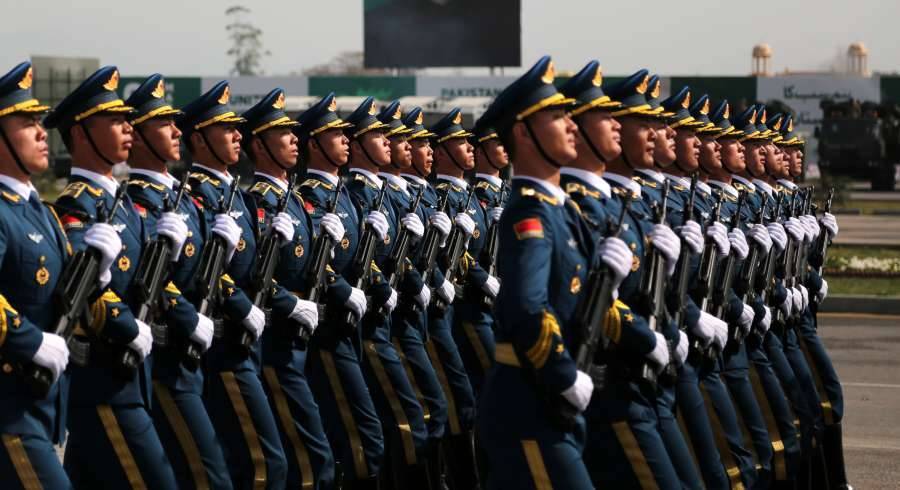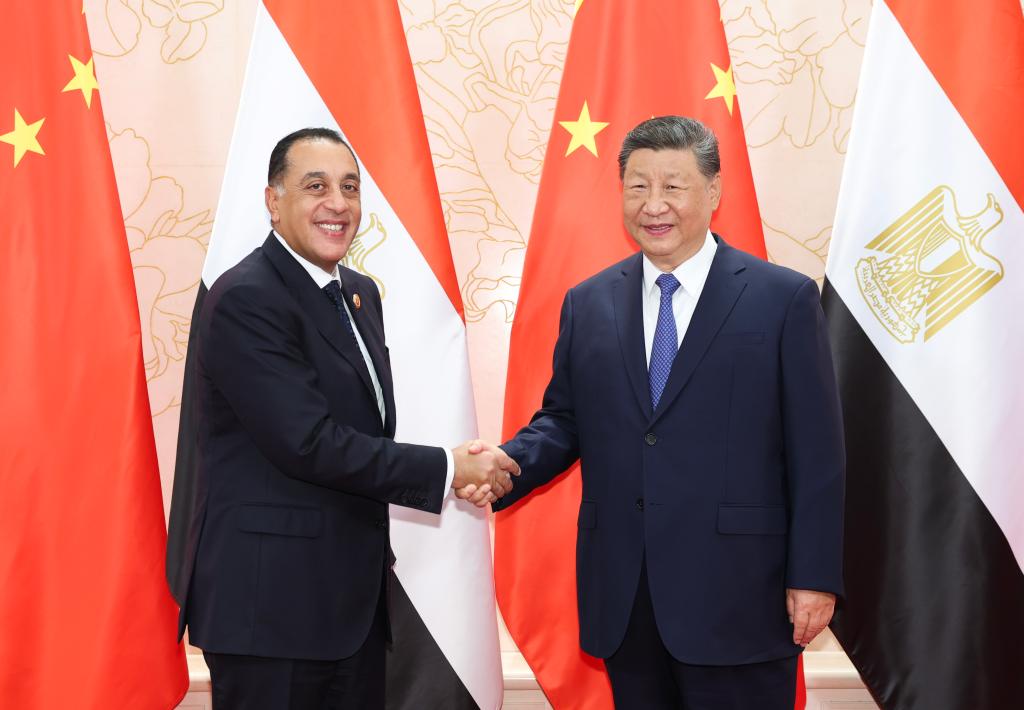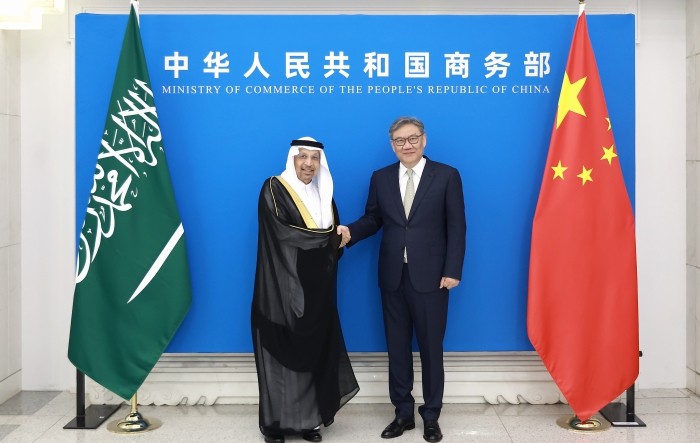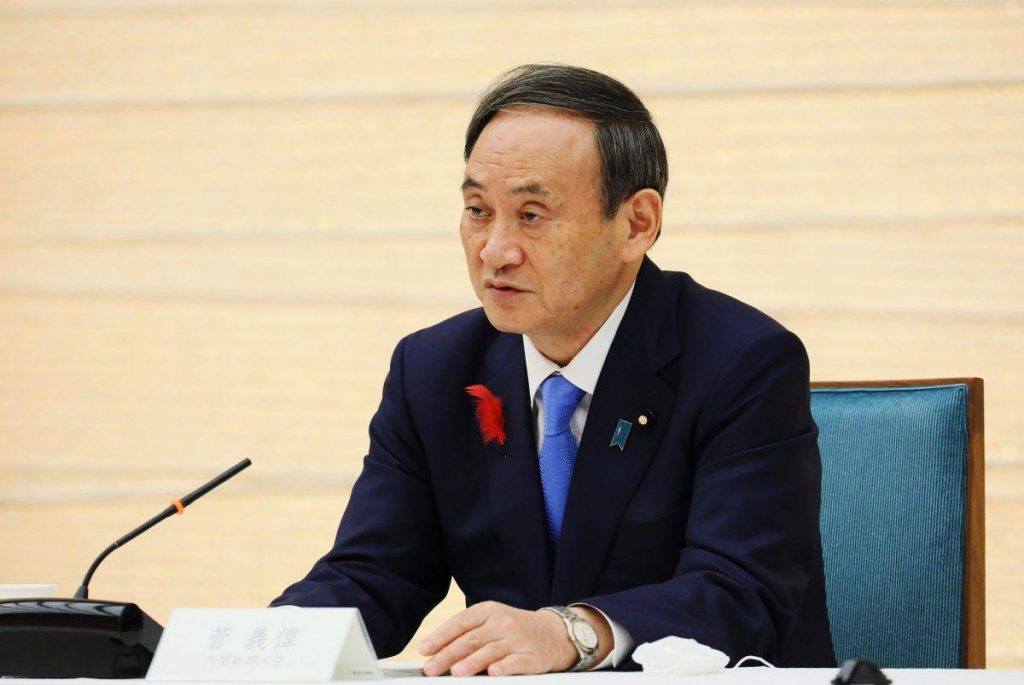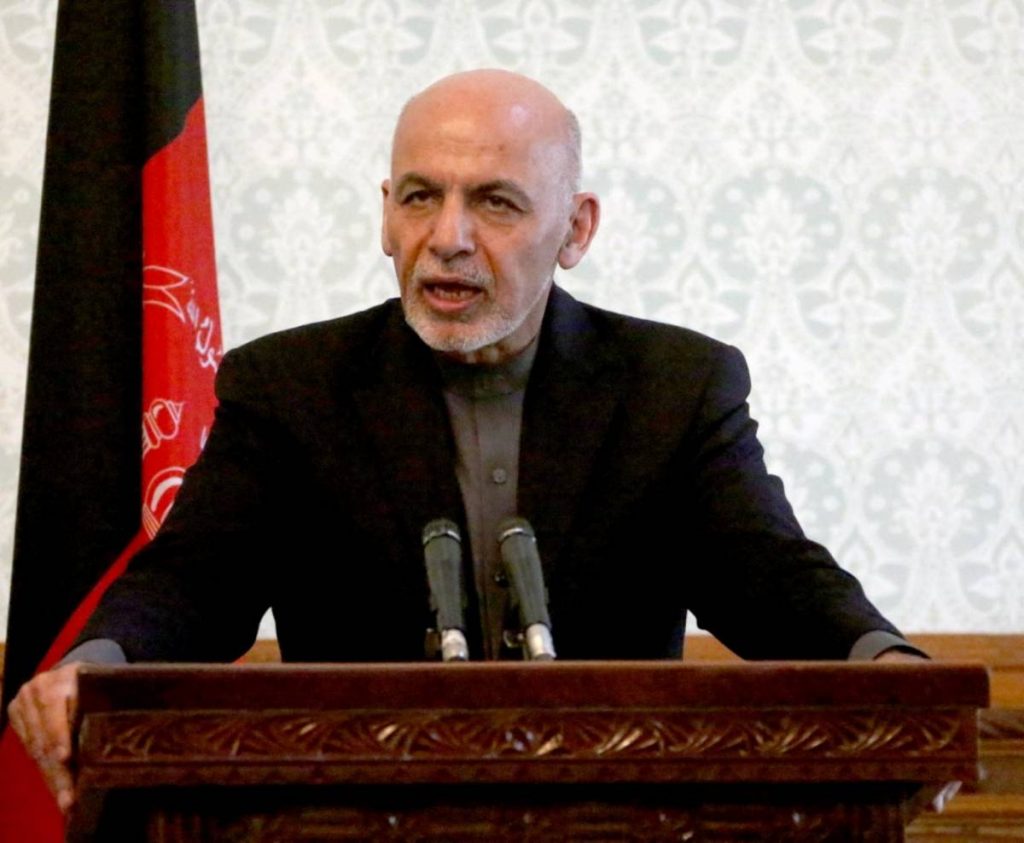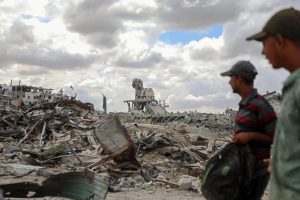China itself has referred to various trump card weapons of the People’s Liberation Army (PLA) as “Assassin’s Maces”…reports Asian Lite News
Methods of waging war developed rapidly in the last century, as machine guns dominated World War I, and aircraft and tanks rose to the fore in World War II. The technology of war continues to evolve, and China is among those at the forefront of seeking new ways to disable, neutralize or kill its perceived enemies.
For a couple of decades the Chinese concept of “Assassin’s Mace” weapons was frequently referred to. This comes from the Chinese term shashoujian, a hero from ancient Chinese folklore who overcame more powerful enemies by wielding a club and attacking the enemy suddenly outside the rules.
China itself has referred to various trump card weapons of the People’s Liberation Army (PLA) as “Assassin’s Maces”. Examples include the PHL-03 truck-mounted multiple rocket launcher, or the DF-21D anti-ship ballistic missile. Indeed, China is the only country in the world to field a weapon of this latter category.
While the term is still used by Chinese and Western commentators alike, it is perhaps time to more widely utilize the term “New Concept Weapons” (xin gainian wuqi). This terminology dates back to the 1960s, when China once used it as a synonym for directed-energy weapon programs. It has evolved over time, however – especially in the past decade – and it now equates to “new mechanism weapon systems”, these being technologies that disrupt an adversary and create asymmetric advantages for the PLA.

We are not yet referring to fanciful science fiction notions such as light sabers and dueling spaceships. Rather, the topic is heavily based on the digital and cyber domains.
That means that many of these “weapons” belong to the PLA Strategic Support Force (PLASSF), a special-purpose force formally established in December 2015 to handle the space, electronic warfare and cyber aspects of modern warfare.
Marcus Clay, an analyst with the US Air Force’s China Aerospace Studies Institute, explicated on the terminology of New Concept Weapons (NCW) for The Jamestown Foundation, a think-tank based in the USA. He described it as follows: “In the mid- to late 2000s, PLA writers approached NCW more holistically, broadly defining them as weapons that embodied technological innovation and breakthroughs. NCW were said to have the potential to deliver ‘surprise effects’, and could fundamentally change the patterns and efficacies of military activities.”
Clay explained that, in the 2010s, Chinese academic and military interest grew even greater in such technologies. “Disruptive technologies, through which NCWs deliver effects, were placed front and center. More recent discussions on NCW focus on ‘new energy sources, new principles of action and new destruction mechanisms’.”

Indeed, such weapon systems are being developed on fundamentally new principles, adopt new mechanisms for destruction and often employ different combat methods. Having gained an appreciation of what a New Concept Weapon is designed to do, it is probably now useful to think of some concrete examples.
Unfortunately, due to the nature of these weapons, one cannot easily point to a gun, ship or aircraft and say here one is! As previously stated, because New Concept Weapons work primarily in the information domain, their realm of effectiveness is often digital and cannot be readily seen let alone named.
What Clay did offer was examples of broad categories of New Concept Weapons as discussed within China in the past decade. Previously, China would divide them into the broad categories of energy weapons as a “new sword”, information weapons as a “force multiplier” and biological/chemical weapons as an “invisible card”. Such divisions are largely giving way to a weapon’s effects rather than its source.
Nonetheless, Clay listed energy New Concept Weapons such as kinetic-energy weapons; directed-energy weapons (e.g. lasers, microwaves, electromagnetic pulses or particle beams); new atomic weapons (e.g. neutron bombs, antimatter); and sonic weapons (e.g. noise, infrasound).

Moving on, information New Concept Weapons include: intelligent networks, electromagnetic spectrum attack and defense weapons (e.g. computer chip viruses); new- type psychological intervention/warfare weapons (e.g. noise intervention, holographic displays); nanosatellites to collect intelligence; decision-making support systems based on big data; military cloud computing platforms; logistic support based on the Internet of Things; and weather warfare/modification.
Examples in the third category of biological/chemical New Concept Weapons are genetics (e.g. gene editing or genetic virus weapons) or non-lethal/disabling chemical weapons. This broad category is interesting given the accusations some have made that COVID-19 was originally developed by the PLA in a Wuhan laboratory close to the epicenter of the global outbreak.
Also read:Citizen journalists suffer the worse in China
The PLASSF will obviously be instrumental in using many of these technologies, and it is singled out as a growth point for their combat capabilities. It presumably gets involved in both developing and testing such new weapons.
As China develops such weapons, it is critical that such technologies be forward leaning (e.g. mature within the next 20 years), be feasible and supportable by established industry, can themselves facilitate industrial scientific and industrial development, and reflect some degree of urgency.
In 2014, China listed some weapons that matched these four criteria. They included network attack and defense weapons, anti-satellite weapons, lasers, microwave weapons, new energy artillery systems, stealth weapons, new atomic weapons, hypersonic kinetic weapons, particle beams and non-lethal chemicals.
There are in fact overlaps with weapons that China has employed. For example, it is alleged during the ongoing border dispute with India, that PLA troops used a microwave weapon at Lake Pangong to drive Indian troops from two hilltops. Microwave weapons focus high-frequency electromagnetic pulses that cause irritation and pain in human tissue. A Chinese academic claimed, “In 15 minutes, those occupying the hilltops all began to vomit. They couldn’t stand up, so they fled. This was how we retook the ground.”
However, the Indian government refuted claims that the PLA employed microwave weapons. Regardless, China has certainly been developing such weapons. At the Zhuhai Air Show in 2014, for instance, Poly Technologies exhibited a truck-mounted microwave active denial system called the WB-1, with a claimed range of 80m. With microwave weapons, China can suppress an enemy in order to seize territory without firing a shot.

There are reports that the PLA Navy has fitted microwave weapons on naval vessels for use against “intruders” in the South China Sea. Furthermore, in 2017 a national technology award was given for developing a high-power microwave weapon able to defend warships against anti-ship missiles. Astonishingly, it is alleged that China used microwave weapons against American diplomats and family members in Guangzhou in 2018.
China has been using lasers against pilots too, including American military aviators flying over Djibouti and the East China Sea. Lasers are often wielded by Chinese People’s Armed Forces Maritime Militia vessels to harass others in this way. Electromagnetic weapons are a fruitful area of research. China installed an electromagnetic launch railgun onto a Type 072III-class landing ship, Haiyang Shan, as an experiment, with photos of it emerging in January 2018. A railgun launches a shell at seven times the speed of sound. The USA has also been exploring railguns, but technical challenges exist, including the problem of hitting a moving target at long range, since the projectile is unguided and non-explosive. Barrel metallurgy problems have dogged American efforts, as gun barrels have to be changed after firing just a dozen or so rounds.
If the technology can be mastered, a railgun would be much cheaper than missiles. China has obtained some technologies illegally, including theft from the USA, as well as buying data from susceptible foreign academics and the like. Ukraine and Russia have been fertile grounds for Chinese espionage, for example.
At China’s 1 October 2019 military parade in Beijing, the PLASSF enjoyed an elevated profile. Numerous vehicles sporting all manners of electronic warfare equipment were featured.
Also read:Pakistan to produce China’s vaccine
Additionally, the PLA Rocket Force also rolled through Tiananmen Square examples of its DF-17 missile with hypersonic glide vehicle attached. The DF-17 is the first hypersonic glide vehicle system to be publicly displayed by any major military in the world.
Unmanned systems, whether drones that operate in the air, on land, on the sea surface or under water, are also proliferating in the PLA. Indeed, China is one of the larger exporters of armed unmanned combat air vehicles, for example.

Clay commented, “All NCW, particularly those that operate in the information domain, are discreet, non-attributable and cost-effective – traits which appear to be highly valued by Chinese writers … Similarly, Chinese researchers clearly favor anti-satellite and advanced cyber weapons because such weapons cause ‘destructive and irreversible damage’ to expensive enemy systems without incurring huge cost for the offensive party.” A high-energy laser employed in space, for instance, is non-attributable and is used for just a short duration.
Of course, China will be aware, as it develops its own information and cyber capabilities, that it will become more vulnerable to attack itself. One can expect that the PLA is simultaneously fortifying its own systems to prevent intrusion.
One other aspect that should be considered is the cognitive impact of all these New Concept Weapons. Not just the weapons themselves, but their psychological impact and effect on an adversary’s morale are just as important. China is thus attempting to “disorient enemy minds, weaken their willpower and deprive their fighting spirit,” in the words of a PLA Daily article.
Clay described China’s strategy for research, development (R&D) and acquisition of New Concept Weapons as “slow yet steady”. He added, “Chinese analysts are keenly aware of the high cost, uncertainties and high risk associated with NCW development, and have urged the PLA to ‘correctly understand the return on investment’. Evidence also suggests that the PLA is dedicating significant effort to the development of a credible and sustainable standards validation system to ensure that NCW R&D and acquisition will be properly executed.”

Clay concluded: “The Chinese defense community’s interest in exploring NCW is consistent with the PLA’s emphasis on pursuing asymmetric strategies to create and sustain advantages in warfighting. As the perceived weaker party in future conflicts, both in terms of technological and military capabilities, Chinese authors see the value of developing a ‘savvy NCW strategy’ for China.”
Unable to take on the USA in a conventional war, China sees such weapons as critical in developing asymmetric advantages. For sure, the information domain will remain the priority for the PLA in this new kind of guerrilla warfare.
China is inducting all sorts of new weapons, but it is another thing altogether to be able to use them effectively in a combat environment. Furthermore, the PLA remains an intensely hierarchal organization where loyalty to the Chinese Communist Party and Chairman Xi Jinping are paramount. One would be a rash PLA officer to take risks or to show individual initiative in such an environment. Then again, this is an advantage of some of these new weapons for they offer plausible deniability to China.
Clay, the American analyst, added, “The PLASSF’s possible mission pertaining to NCW and military applications for disruptive technologies remains largely unknown. But the seriousness, depth and scope of PLA efforts into the exploration of ‘new mechanisms’ to win future wars warrants further research. Indeed, it may be useful for Western PLA watchers to view Chinese thinking about NCW as an integral component of the PLA’s evolving deterrence strategy.” (ANI)
Also read:Japan concerned over Beijing’s moves in South China Sea

